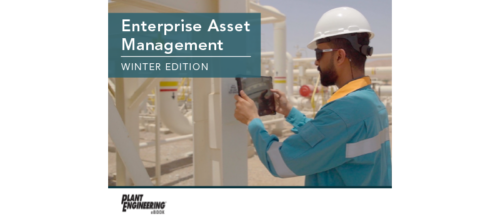Give maintenance a fighting chance
Whether you Bob or Weave, putting a plan in place can stretch dollars in tough times
Third of three parts
Read Part 1 HERE
Read Part 2 HERE
Over the last couple of sessions, I detailed some basic predictive maintenance (PdM) technologies of infrared thermography and ultrasound for steam and compressed air systems to identify and calculate energy waste within facilities.
This third part pulls it all together building with a couple of real client results and the KISS principal for building a completing business case for your program’s efforts.
The Tales of Bob and Weave
Bob and Weave are making the big bucks as facility directors overseeing reliability programs at two different large pharmaceuticals. Each have about 24,000 assets at 10 plants. Both deploy PdM technologies to drive the most cost-effective, reliable, safe, efficient and sustainable facility capacity possible. The difference is Bob is using sophisticated software while Weave is building a program from ground up.
In the last six months, each leader’s company has had more than 3,000 positions have vanished and the buzz is that there are more layoffs coming, not to mention less overtime and a 15% cost reduction across the board. Forget getting the capital for improvements, both are trying to keep their reliability programs staffed while and sustaining production.
Where will they find some money?
Both organizations have the knowledge and skills address the issues but may lack the information to pinpoint the cause and implement timely and cost effective repairs. The good news is that in most cases, the energy savings can be found within your existing processes.
Bob – Maintenance Leader #1: The great news is that Bob has a centralized enterprise asset management system that will help mine and trend information that can identify systems with the highest probability of providing energy savings. You were told the information is there so it is time to start making this system pay.
A quick search of the EAM platform shows that infrared thermography of your electrical systems has identified 793 temperature anomalies totaling 44,300oF in temperatures higher than that of the OEM heat curves and a potential savings in the next year of $94,353.
Just like a crime scene investigators, Bob’s team follows the clues to find the bad actors. Now that Bob has the information, applying his knowledge is easy and determines the direction and proactive strategies. Using a rule of thumb that 70% of electrical thermal issues are caused by loose connections cross-referenced with the top 10 components (blue highlights), the list starts to become a little more manageable with 521 items worth $80,000 in savings (blue highlights).
Bob has a two-pronged plan: Issue work orders to critical systems with connection issues or the highest paybacks and establish a connection torque program during the annual infrared inspections. Successfully eliminating these poor / loose connections has the potential to eliminate 30,000oF in excessive temperatures (Bright Yellow Highlights) and the associated fire and safety risks.
He may also get lucky, by using the EAM platform to cross-tie the next bad actor cause category of internal flaws with “poor connection-related” assets with problem components already being addressed or near the these systems. Bob is confident since this energy saving opportunity doesn’t include motor systems, compressed air, steam, etc.
Sophistication Pitfalls
The challenge for many is that PdM programs generate an enormous amount of data. Much of this is delivered in word processing documents, PDFs and spreadsheets, proprietary software and hard copies which slow a Leader’s ability extract information for making empowered and proactive decisions.
Basically, don’t blinded or stalled by these programs’ bells and whistles and effort required to input and extract information. Even if you are like “Bob” and have robust software platforms and “mountains” of data, these systems create a belief that “we must wait for the software to kick out perfect information before making a decision”.
Additionally, many times the information that would empower a “closed-loop”, PdM-to-repair process is missing on the back end of these systems. Chalk it up to human nature or culture, once the repair has been made, the “after repair” information, which is needed for some of your energy calculations, never makes it back into the CMMS or EAM. It is perceived as a waste of time or of less value compared to the interesting wrench time on the next work order and ultimately the data never documented.
This brings us to Weave.
Weave – Maintenance Leader #2: Weave is experiencing the realities of a pilot program within its early stages of not having perfect information, trying to add a technology and/or trying to build a critical mass of data.
Weave knows time is running out that he may have one opportunity to mine the asset data / financials to gain management acceptance of reliability programs as a contributor to the bottom line and funding support. The good news is that he has implemented a few PdM technologies and started to show nearly $20,000 in annual potential savings. The following are examples from Parts I and II of this series.
“Potential” is used since someone must implement repairs but it may have to be with little or no capital support. The good news is that the hot and loose electrical connections and compressed air fittings could be addressed with minimal labor and material investment. Even the material cost of purchasing a new steam trap is only a few hundred dollars.
The results are only scratching the surface as the total savings are based upon total equipment population, completeness and frequencies data collections with any existing programs and the wealth of additional energy saving opportunities with additional PdM technologies such as vibration monitoring/alignment strategies, motor circuit and motor current analysis, lube oil analysis/optimization, and aerial infrared surveys for roof moisture saturation.
Keep It Super-Simple (KISS) to Close The Deal
Today’s recessionary pressures prevent many maintenance leaders from affording this software luxury and or the possible stagnation of efforts. Whether you have are Bob with sophisticated software of Weave implementing a pilot project, both require “keeping it super simple”, small, accurate and manageable to build a case for targeted equipment opportunities with the best and highest probability success.
1. Start Small and Target Problem Areas – This includes combining the following equipments lists, known problems areas and the energy bills to establish a beachhead for your program
2. Build Prioritized Equipment Lists comprised of basic equipment IDs, location, failure modes and criticality
3. Centralized Data – Centralized data is easily accessed, extracted and turning into information with the use of simple but powerful spreadsheets or databases. I recommend MS Excel which can keep data collection and centralization to a simple, consistent and manageable level for you, or service provider’s information. The goal is to turn this data into usable information which empowers your team’s decisions.
4. Take Matters into your own hands. By this, I mean taking a personal stake in collecting the field data and pre- and post-repair readings. This is your project and you may have to overcome cultural barriers, lack of support, manpower shortages and will “trust but verify” the information being collected. Being in touch with the process and validating the results will fuel your passion for the final presentation and closing the deal.
5. Blow Your Own Horn – Once you have solid results, your goal is to provide simple, regular communications that gain support for your reliability and energy saving efforts. The medium could be a few PowerPoint slides or a spreadsheet with a graph of two.
6. Narrow the Message – Be specific in your arguments or requests and keep them simple; not too technical with numerous discussions and calculations about gallons, kilowatts and amperages.
7. Financial Benefits To Corporation (ROI) – The message should be financially based covering return on investment (ROI), net present value and/or cost of avoided downtime. Don’t get caught in the trap of only talking about the savings and ignoring the costs to perform the in-house or third-party surveys. Basically, keep in mind that “you have to spend money to make money”.
8. Repeat: Don’t Give Up. Don’t let the program stall and always communicate, communicate and communicated. Many, very successful energy programs started with one or two small victories and incrementally added successes to overcome skepticism, cultural bias towards maintenances, and lack of awareness.
Regardless of a reliability program’s sophistication, this series highlights simple to use PdM tools which can recapture lost energy or help correctly account for its impact to the bottom line and gain credibility for your maintenance team.
Good luck and don’t hesitate to call if you need help.
Do you have experience and expertise with the topics mentioned in this content? You should consider contributing to our CFE Media editorial team and getting the recognition you and your company deserve. Click here to start this process.



